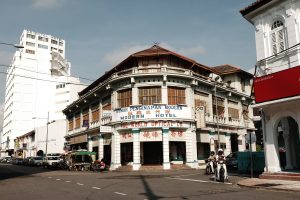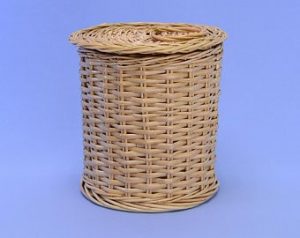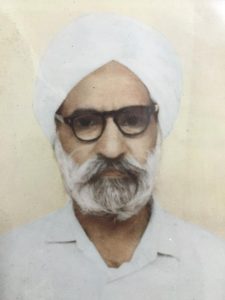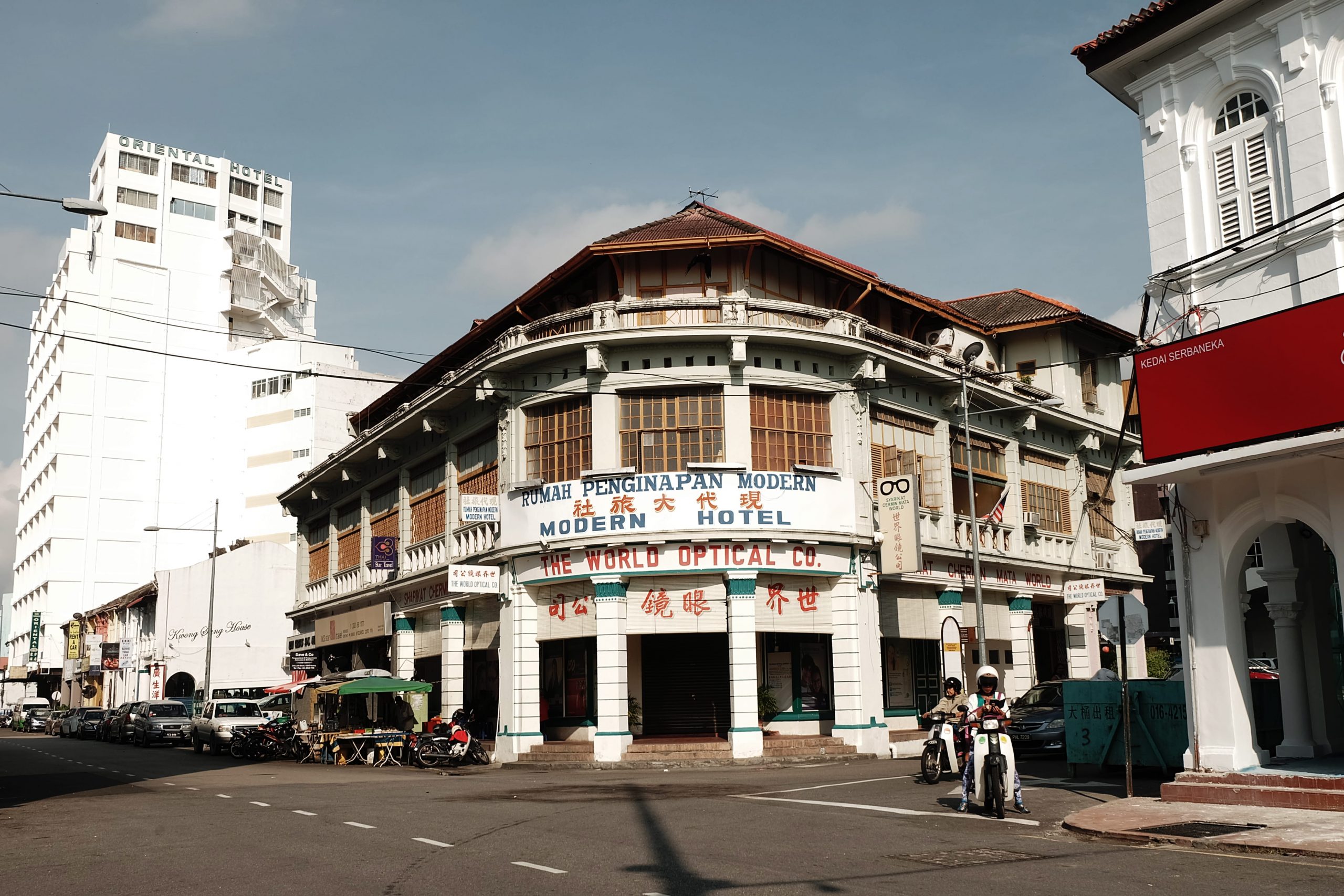
(Image via Piqsels)
Let me tell you more about Ah Mooi whose name was Tan Ah Mooi. She had come to Malaya when she was young and worked hard taking only a few breaks in her life. She could not pronounce my name so she resorted to calling me Tankachi (little sister). I would try to talk to her in Malay language but she mixed with Hokkien and so I learnt Hokkien from her. She would often talk to herself in Cantonese as I recognised the language when I watched Chinese serials. I was quite young but she would take me to the market with her and kept talking to me although I did not understand much. Once she took me to Taiping in a bus to visit her relatives. It was strange but my parents trusted her and let me go with her. Some part of me loved her as I had no grandmother around me.
One day, we saw her come back from her outing with a hand sewing machine, we were excited for her but we could not understand why she waved us away. Once she was off from the household chores, she sewed quilts and made her own sam foo. The sides of her sam foo were hand stitched and looked neat. She would get left over material from her tailor friends and sew them together to make a quilt. After a few years, when she was preparing to visit China, she got a large rattan container like the picture below but 6 times larger and place it outside her room. It had a cover just like Ali Baba’s oil vessel and we would play hide and seek in it, of course without her knowing it. When it was time to fill it, she put in all types of things from sewing machine and bicycle to take home. On the day of her departure, she called the cart guy to take it to the port to be transported away. Today, I regret not asking for her address in China, I could have at least made friends with her family.
Picture below (taken from the internet) is an example of Ah Mooi’s big rattan basket to transport stuff to China. Imagine it to be about 7 foot tall and 5 foot wide with a cover, once it was filled a thick rope was tied to secure it with a lock.

A week before Chinese New Year, Ah Mooi would buy bamboo leaves which came in a tall pole for spring cleaning. It is a belief that the leaves would drive away bad spirits. Ah Mooi would cover her hair which was tied into a bun with a piece of cloth before cleaning cobwebs and dust from the walls. Ground floors of the building were scrubbed and mopped clean to usher in the lunar new year.
On Chinese New Year’s eve, Ah Mooi would pray at her kitchen altar with fruits (oranges, apples and pineapple), rice cakes, some meat, not forgetting the ‘tee kuih’(sweet gluttonous rice cake wrapped in banana leaves) and burn joss sticks. It is a belief that the tee kuih will carry good words to the gods in heaven and bring good luck to the family. Later, she would put all the same stuff on a large tray, take it out of the house and pray on the roadside. Some of the cakes will be strewn on the road to please the spirits of the universe. We would watch and try to copy what she was doing. Later on, she would give us a large plate of the food to enjoy. There were mandarin oranges, kuih kapit and ang koo which we loved to eat. She would also give us Ang Pow (red packet with 50 cents in it) and we would stop the ice-cream man to buy a stick. Whenever giving away containers of cookies/kuih kapit or oranges, a piece of red paper was glued onto the container or oranges for good luck.

(Image via Piqsels)
During Chinese New Year, Ah Mooi would put up a red cloth (like a mini curtain) at the front door of the main building for 15 days. This was an annual thing, to usher in good luck. On one occasion, we had friends over and we started playing around that area (imagining we were in a Hindi movie, dancing and swaying). Our friends went home after dinner. The next morning, we heard Ah Mooi yelling at top of her voice, Yaka Yaka! She complained to him that the red cloth was torn, so papa woke us from our slumber and asked if we had torn it. It was early in the morning that she discovered the damage while sweeping the area. We were confused, we had just played the day before, and who could have torn it. Ah Mooi was really angry and started spanking our hands and we saw that papa did not say anything, he just let her get it out. In today’s time, parents would spank Ah Mooi back for touching their kids.
The maids just like Ah Mooi (her good friend was Ah Lai) smoked little self- made cigarettes. They bought special paper and rolled it with tobacco, lit and smoked it while talking to each other. We would copy her while playing, using rolled newspaper and lighting it from the firewood when Ma was cooking. One day papa saw us doing it and all of us were fiercely scolded. We never indulged in that type of activity again. The maids had a special gathering place at Jalan Atin. Ah Mooi pronounced it as Yalantin where they would play mahjong and hang out with other maids on their rest day. From her stories, they would have ‘makan besar’ (parties) to let out steam by drinking Chinese wine. I’m sure these maids missed their homes in China and back then there was no skype or whatsapp video call to get connected.
Now I will describe my neighbourhood at Northam Road. On our left was a Chinese Association where people gathered during the evenings and weekends to play mahjong and chill out. On some days, the lion dance troupe would practise on their drums and do their thing under the lion cloth. They made a lot of noise but we did not mind. We had no phone in our house, so we took the number from the caretaker of this association. We received calls on this phone and the guy was so nice he would come and inform us so we could take the call. I am grateful to him till today. On one Sunday morning there was a lot of commotion with a large crowd building inside out while the police arrived. We were like little- busy bodies and wanted to know what was going on there, so we went to see. To our shock, a man had hung himself because he had lost in the mahjong game and owed a large sum of money.
To the left of this Association, there was a big house with many rooms let out to families. There was Chee Chai, Ley Ley, Ah Tak, Chin Chin and others that I can remember. We would play cully toy, marbles and hide & seek with them. When Ma made chapatis, they would ask for this Apom and she would gladly give them a piece with some sugar sprinkled on it. Sometimes, we fought with them too and it was not nice then as vulgar words were spewed out. On our right there was Nathan with his wife and 2 kids and they helped us a lot during my childhood. I am lucky to have learnt Hokkien from my Chinese neighbours and Tamil from my Indian neighbours. I know the time when it is Winter Solstice, Cheng Beng, Chap Goh Meh, Goddess Kuan Ying’s birthday, 9th Emperor celebration when Chinese go vegetarians and Ghost month. I also learnt Yeh Ga Desi when Hindus don’t sleep all night, Deepavali, Thaipusam, Chitraparam and Ponggal from my Indian friends . Ah Mooi made lovely Chinese dishes, so I know of Khiam Chai, Ah Char, Khiam Hoo, sambai hai and learnt to eat with chopsticks. No wonder, people in Kuala Lumpur call me “China sesat” (strayed Chinese). I also loved to sing in Chinese and have few numbers which I remember till today (Yeh Lai Siang, Shanghai beach and wah I ta nee). Some tamil numbers are tanee ee rei tamai poo, kaate wang po nai and eh matta dei. I hum the tunes to myself when I am down sometimes.
When I was about 10 years old Ma spoke to Papa about sending all 3 of us for Punjabi classes which were conducted in the Sikh Temple. The temple is on Brick Kiln Road (I wonder if there were kilns before I was born) and the name has been changed to Jalan Gurdwara now. He agreed and so we went for classes daily after school. It was fun, we got back from school, quickly changed, ate lunch, carried our bags and walked to the temple. It was a half hour walk and about 1 km away). On the way, we would pass Transfer Road, turn on to Sri Bahari Road (we had friends who would join us on our walk), Penang Road till we reached Gama supermarket then on to Brick Kiln Road). We would pass by all type of shops, look at different walks of people, beggars, Gurkhas selling good looking stones and fruit shops. We stopped at a little stall to buy Asam katok, pickled Buah Stein and Buah cermai and ate these before entering class. Sometimes we hid the leftover in the desk and finished it when the teacher was not paying attention. Let me tell you a little bit more of my teacher. He was called Giani-ji, meaning someone who has knowledge and I will not deny this. He multitasked, teaching us Punjabi, was a priest for temple programmes, did the temple’s accounts and best of all he was educated in English. I quickly bonded with him for the few years I was under his charge. This was when I was 12 years old, I found a book in the temple library titled “Lady Doctor”. I was reading it but could not understand some items in the book. I asked Gianiji and he explained to me that it was about menstruation. We studied this subject much later in school but Gianiji had gone through it with me, so I was heads up in class. I was a quick learner and finished the early Punjabi books with Gianiji and had just started holy Sikh scriptures when Gianiji had a heart attack and got admitted to the hospital. I persuaded Ma to take me visit Gianiji and we talked for a bit as he joked, not knowing what was coming. A week later, Gianiji was called to be with God and I still cannot forget that day. I was 15 and got a few hours off from school, changed into a simple Punjabi suit and went to the temple to bid my Gianiji farewell. I was sad beyond words for I had lost a teacher, a friend and a father figure to guide me for the remaining years of my life. I mourned for a year, let go and went ahead to learn from his wife. Of course, it was not the same and so I left it there and only later in life I finished reading the Sikh scriptures. Gianiji left a legacy – no matter whatever age you are at, do not stop working and complete what you have plotted out for yourself. His golden rule was let others say what they want, we just go on with life our way. I miss him till today and every 9th March I will take a moment to remember him.
 Giani Joga Singh Ji (picture contributed by Sukhindarpal Singh)
Giani Joga Singh Ji (picture contributed by Sukhindarpal Singh)

Giani Ji and his wife (picture contributed by Sukhindarpal Singh)
Ma was the youngest daughter and so was her mother’s pet and so got to do things her way. There were no formal schools in her village in Punjab so she was sent to the temple priest who taught her the Punjabi language. Money was a scarce subject, so Ma worked cleaning and washing for the priest’s family. Later she learnt the holy scriptures and some sewing. She was quite ambitious and had thoughts of marrying a reasonably educated man but she got Papa who was illiterate. After my second brother was born, we became friends with Lucy’s family who lived not very far from us. She taught Ma to read in English. It was a bit difficult at first but Ma translated from Punjabi language to be able to pronounce the letters correctly. This is how Ma taught me and my brothers when we were very young. She would collect atta flour paper, sharpen pencils and make us write the alphabets on the paper. Imagine without going to school, Ma could read, write slowly and speak English till today.
Lucy’s family (Ammi, Achan, Jacob, Angeline, Anthony and Maryanne) helped us with our upbringing and shifted to a house farther away when we were teenagers. We are always indebted to them and will never forget the hard times we went through together.
Ma knew how to stitch and would borrow her friend’s sewing machine. She would sew a dress, a skirt or a Punjabi suit for me. She kept pestering Papa to buy her a sewing machine and one fine day Papa agreed. His friend recommended a second-hand sewing machine with a cost of RM50. She was happy and started sewing saree blouses for the neighbours. Word got around and she had quite a number of customers especially during Deepavali. One saree blouse cost 0.50 cents at that time but she made her money and I will tell you what she spent her money on later.
When I was six and half years old, I went to Convent Penang Road. It is a short walk about 15 minutes from where we lived. When papa was not working, he would send me to school on his bicycle. Usually Ma would accompany me and we would take a short cut. Once we walked on Sri Bahari Road, next to ‘The Ship’ there is a tiny lane going through some houses which were owned by the St George’s church. We would come to a little chapel on the right hand side after the houses, pass the church and the priests’ quarters and reach my school. My school was a 3 storey building and the lower classes were held on the left which was 2 storey. I studied here for 3 years and from standard 4 onwards, went to the right wing. When examinations were around, students would go to the church to pray for success. At the right hand side of this church was a medium sized field where we did our physical exercise (P.E.). Next to this field was the famous cemetery where Francis Light was buried. If you walked through the fence, there was a little gate and you would reach the other side next to Farquhar Street. During the afternoon P.E. class which was the last period of the day, the place would be quiet and it felt eerie.
The St George’s church held pre-Christmas children’s party 2 Saturdays before Christmas day. Lucy’s family helped us buy the tickets which were at RM1 per piece and Ma would buy 3 tickets. On that particular Sat, we would have our lunch, get dressed and reach the church at 3pm. We would be seated in rows with other children and served with cold drinks and various types of cakes. We felt lucky as though we were some royal children having a feast, like one of those scenes in television. There were games we played, and finally we made a line to get into that mysterious house near the field. When we gave our ticket which had a number, it would be matched to a toy on the shelves. With smiles on our faces, we would exit from the door at the other side and gather near Ma, showing off our new toys. I can’t explain the feeling, but it was on top of the world. We got to know the head priest, Father Aloysius and had a small talk with him once. We went to the church often, sat inside, tried to understand mass and what holy communion was. We could hear the sound of the bell when it struck 12 in the afternoon or 5 in the evening. Sometimes at odd times, the bell would ring and we knew it was a death and they had brought the coffin to church. On Christmas and New Year’s, the bell would ring at midnight and we felt at peace knowing a new tomorrow was ahead. On one Deepavali eve, Ammi passed away and we went to this church to pay our last respects. Even though we were dressed well for Diwali, it was a sad day.
After standard six, it was time to leave Convent Penang Road and head to Convent Light Street. Here, I studied for another 5 years besides having a lot of fun. In the beginning, papa still sent me to school on his bicycle and waited for me outside St Xavier’s school in the afternoon. I was embarrassed as boys from the opposite school teased me while I got on Papa’s bicycle, so I told papa to buy me a bicycle. I wanted to be independent now that I was in a secondary school. So, when I finished form 1, Ma and my youngest brother went for a visit to India and this was the time Papa bought me a mini bicycle. I was over the moon, learning to ride the new bicycle and of course, it was different from Papa’s big bicycle. When I was in form three while studying in the room with my bike parked outside, some drug addict thief came and stole this beautiful bike. I was devasted as I was about to go for Maths tuition in Anson Road and the bike had disappeared. There was an old bicycle around, so I had to make do with that one. We went a made a police report but the mini bike was never found. I became braver by the day, cycling to school, for tuition and later for type writing classes after form five. I just got to know that Maths teacher had passed away some months back, may the Almighty bless him.


